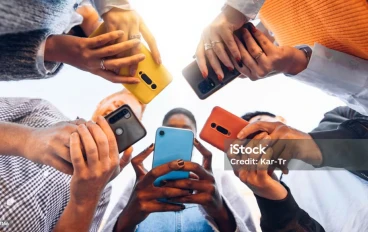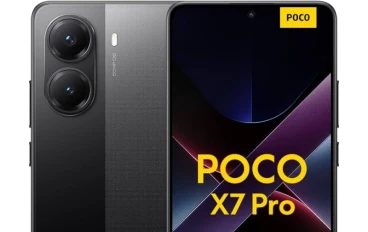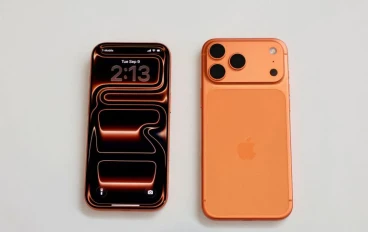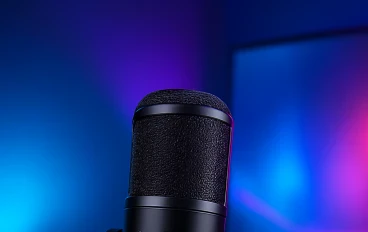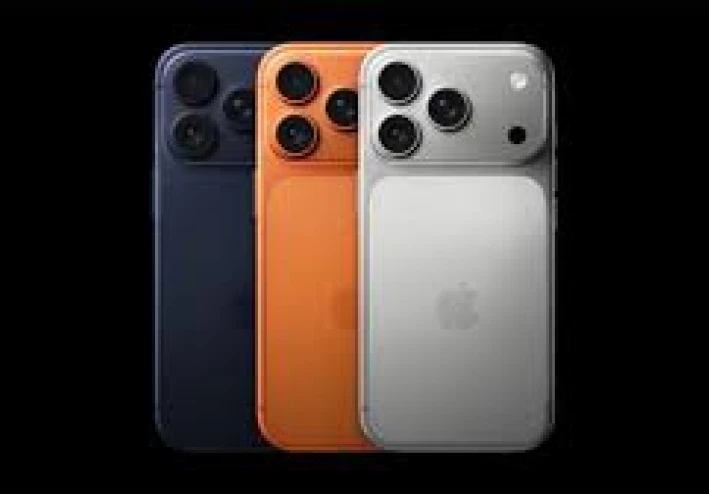
ما الجديد في الجيل الجديد من الايفون
في 9 سبتمبر 2025، كشفت Apple رسميًا عن iPhone 17 كجزءٍ من سلسلة 17 الجديدة، مع بدء المبيعات في 19 سبتمبر. PhoneArena+2Tom's Guide+2 الجهاز يأتي بتحسينات ملحوظة مقارنةً بالإصدارات السابقة، خصوصًا من ناحية الشاشة والكاميرا، مع المحافظة على نقطة السعر للبداية كما في iPhone 16. PhoneArena+2PhoneArena+2
التصميم والشاشة
الحجم والمظهر: شاشة OLED بقياس 6.3 بوصة من نوع Super Retina XDR، بتصميم "all-screen" تقريبًا مع مستشعر Dynamic Island. PhoneArena+3Apple+3Tom's Guide+3
معدل التحديث والتقنيات: يأتي بمعدل تحديث ProMotion المتغيّر حتى 120Hz، وهي ميزة كانت مقتصرة سابقًا على طرازات Pro فقط. هذه الميزة تتيح سلاسة أعلى عند التمرير والانتقال بين التطبيقات. Tom's Guide+2Tech Advisor+2
سطوع الشاشة والمتانة: أبل زوّدت iPhone 17 بشاشة ذات سطوع ذروة (outdoor peak) يصل إلى 3000 نيت، مع زجاج أمامي من نوع Ceramic Shield 2 ومقاومة عالية للخدوش والانعكاسات. أيضًا الشاشة تدعم خاصية العرض الدائم (Always-On). Apple+2Tom's Guide+2
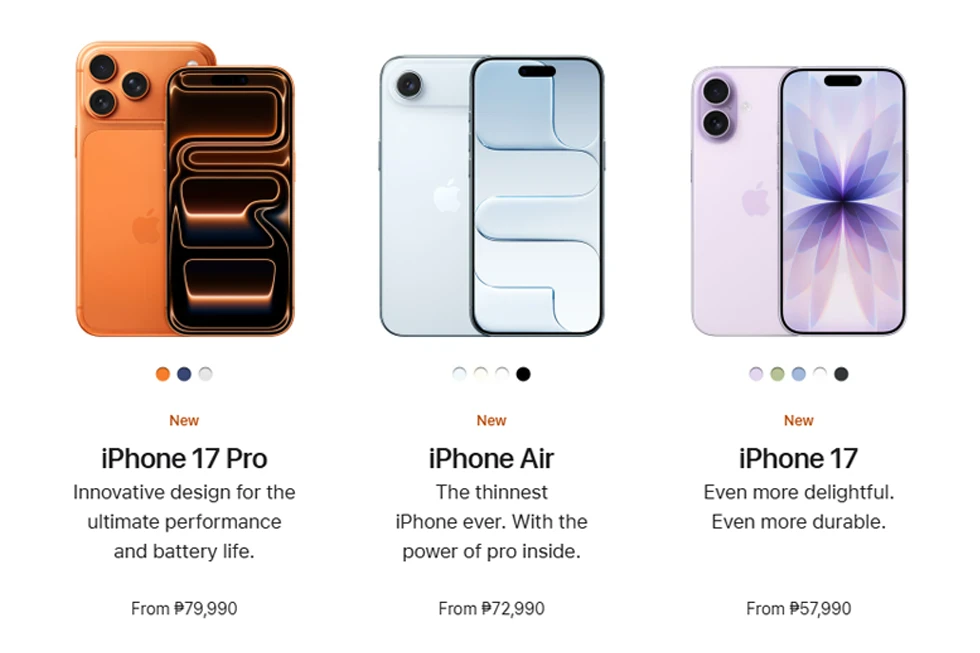
الكاميرا
الكاميرا الخلفية: كاميرتان بدقة 48 ميجابيكسل — واحدة رئيسية (wide) والأخرى ultrawide، مع تقنيات مثل Dual Fusion وPhotonic Engine وSmart HDR 5. التحكم في الصور الليلية (Night Mode)، التصوير البانورامي، تحسينات في التصوير الماكرو. Apple+2PhoneArena+2
الكاميرا الأمامية: تم التحديث إلى كاميرا أمامية بدقة 18 ميجابيكسل مع ميزة Center Stage التي تتيح تجانسًا أفضل في تصوير السيلفي والمكالمات المرئية، بالإضافة لدقة أعلى وتحسينات في الثبات والإضاءة. Apple+2PhoneArena+2
الفيديو: يدعم تصوير 4K بمعدلات مختلفة، + خاصية Dual Capture التي تتيح تسجيل باستخدام الكاميرا الأمامية والخلفية في نفس الوقت. Apple+1
الأداء والمعالج
المعالج المستخدم هو A19 بتقنية تصنيع على مستوى 3 نانومتر، مما يعني تحسينًا في الأداء وكفاءة استهلاك الطاقة. Tom's Guide+2PhoneArena+2
الذاكرة التخزينية تبدأ من 256 جيجابايت وتصل إلى 512 جيجابايت. Apple+1
باقي المكونات من حيث الاتصال تدعم 5G (sub-6 GHz و mmWave)، Wi-Fi من الجيل السابع، بلوتوث أحدث، تقنيات الموقع المتقدمة، وغيرها. Apple+2PhoneArena+2
البطارية والشحن
سعة البطارية تقريبًا 3692 ملي أمبير/ساعة، مما يعطي تحسناً طفيفاً عن الجيل السابق، مع قدرة على تشغيل الفيديو حتى 30 ساعة تقريبًا. Macworld+1
الشحن السريع يُتيح شحن الجهاز إلى 50٪ في حوالي 20 دقيقة باستخدام محوّل بقدرة 40 واط أو أكثر. والشحن اللاسلكي يدعم MagSafe وQi2 بقوة حتى 25 واط. Apple+2PhoneArena+2
المواصفات الأخرى والمزايا
مقاومة للماء والغبار بمعيار IP68 (حتى عمق 6 أمتار لمدة تصل إلى 30 دقيقة). Apple
أجهزة الاستشعار التقليدية مثل Face ID، مقياس البارومتر، الجيروسكوب، التسارع، الاستشعار القريب والضوء. Apple
USB-C بدلًا من المداخل القديمة، دعم لتوصيل الشاشة (DisplayPort عبر USB-C) وبعض الميزات التي تسهّل التوصيل بالشاشات الخارجية أو النسخ الاحتياطي. Apple
نظام التشغيل عند الإطلاق: iOS 26 مع تحسينات في الواجهة وتجربة المستخدم، حماية أفضل، وميزات ذكية جديدة. Tech Advisor+2Apple+2
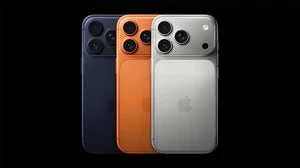
السعر والتوفر
السعر الابتدائي لـ iPhone 17 يبدأ من $799 للطراز الذي بسعة تخزينية 256 جيجابايت. PhoneArena+1
الألوان المتوفّرة تتضمن: أسود، أبيض، Mist Blue، Sage، Lavender. Apple+2Macworld+2
الوزن حوالي 177 غرامًا، السماكة تقريبًا 7.95 مم. Apple
المميزات البارزة والعيوب المحتملة
المميزات البارزة:
إدخال شاشة 120Hz لجميع المستخدمين، وليس فقط لموديلات Pro، مما يُحسّن من التجربة اليومية بشكل كبير. Tech Advisor+1
ترقية في الكاميرات، خصوصًا الكاميرا الأمامية ودقة الصورة والتصوير الليلي. Apple+1
تحسين في البطارية والشحن، مع سعة أفضل وشحن سريع بجودة محترمة. Macworld+1
نفس السعر الابتدائي رغم الإضافات الجديدة، ما يجعله قيمة أفضل لمن يريد مُيزات متقدمة دون الانتقال إلى الفئة الـ Pro. PhoneArena+1
العيوب المحتملة:
رغم التحسينات، قد لا تكون كل المزايا مثل التقريب البصري القوي أو الكاميرات المتعددة متوفّرة كما في طرازات Pro/Pro Max.
الشحن السريع مقبول، لكن ليس بنفس سرعة بعض المنافسين الذين يقدمون شحنًا يفوق 65-أو-80 واط في بعض الدول.
الجهاز لا يدعم بطاقة SIM الفيزيائية في بعض الدول، يعتمد بشكل كبير على eSIM في بعض الطرازات. Apple
الخلاصة
باختصار، iPhone 17 يمثل خطوة مهمة للأمام في هواتف Apple غير-Pro، حيث يجمع بين شاشة متقدمة، قدرات تصوير محسنة، وأداء ممتاز مع معالج A19، مع الحفاظ على سعر الدخول. إذا كنت من مستخدمي iPhone 14 أو أقدم، فقد يكون الترقية له خيارًا منطقيًا جدًا. أمّا إذا كنت تفضل الميزات العليا مثل التكبير البصري القوي أو الكاميرات المتعددة جدًا، فربما طرازات Pro أو Pro Max تكون أنسب.


























